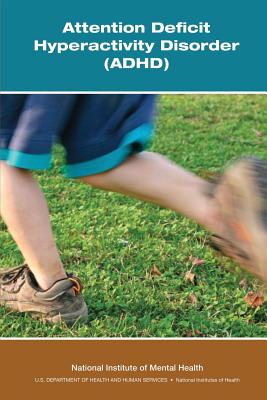Attention deficit hyperactivity disorder (ADHD) is one of the most common childhood brain disorders and can continue through adolescence and adulthood. Symptoms include difficulty staying focused and paying attention, difficulty controlling behavior, and hyperactivity (over-activity). These symptoms can make it difficult for a child with ADHD to succeed in school, get along with other children or adults, or finish tasks at home. Brain imaging studies have revealed that, in youth with ADHD, the brain matures in a normal pattern but is delayed, on average, by about 3 years. The delay is most pronounced in brain regions involved in thinking, paying attention, and planning. More recent studies have found that the outermost layer of the brain, the cortex, shows delayed maturation overall, and a brain structure important for proper communications between the two halves of the brain shows an abnormal growth pattern. These delays and abnormalities may underlie the hallmark symptoms of ADHD and help to explain how the disorder may develop. Treatments can relieve many symptoms of ADHD, but there is currently no cure for the disorder. With treatment, most people with ADHD can be successful in school and lead productive lives. Researchers are developing more effective treatments and interventions, and using new tools such as brain imaging, to better understand ADHD and to find more effective ways to treat and prevent it.
| FindBook |
有 1 項符合
Attention Deficit Hyperactivity Disorder (Adhd)的圖書 |
 |
Attention Deficit Hyperactivity Disorder (Adhd) 作者:U. S. Department of Health and Human Services(COR)/ National Institute of Mental Health (COR)/ National Institutes of Health (COR) 出版社:Createspace Independent Publishing Platform 出版日期:2013-10-05 語言:英文 規格:平裝 / 28頁 / 22.9 x 15.2 x 0.3 cm / 普通級 |
| 圖書館借閱 |
| 國家圖書館 | 全國圖書書目資訊網 | 國立公共資訊圖書館 | 電子書服務平台 | MetaCat 跨館整合查詢 |
| 臺北市立圖書館 | 新北市立圖書館 | 基隆市公共圖書館 | 桃園市立圖書館 | 新竹縣公共圖書館 |
| 苗栗縣立圖書館 | 臺中市立圖書館 | 彰化縣公共圖書館 | 南投縣文化局 | 雲林縣公共圖書館 |
| 嘉義縣圖書館 | 臺南市立圖書館 | 高雄市立圖書館 | 屏東縣公共圖書館 | 宜蘭縣公共圖書館 |
| 花蓮縣文化局 | 臺東縣文化處 |
|
|
圖書介紹 - 資料來源:博客來 評分:
圖書名稱:Attention Deficit Hyperactivity Disorder (Adhd)
|











